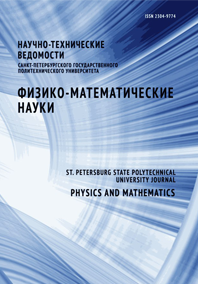Improved polymer residuals removing after the graphene transfer to enhance sensors performance
Graphene transfer using polymers as a supporting layer makes sensors with exceptional yield and few defects. It is still an issue to make scalable and versatile high-purity graphene transfer method. Current-voltage characteristic slope and hence the sensitivity of the graphenebased devices are limited by the residual polymer left after the transfer process that forms local defects and trapped states quenching charge transfer. Due to the strong interactions between polymer and graphene, residual removal remains an important problem to solve. In this work graphene on Cu foil was covered using spin-coating of poly(methyl methacrylate) (PMMA) with different molecular masses and the addition of a low volatile additive. The film obtained was transferred onto Si/SiO2 substrates. In order to remove PMMA residues multiple cleaning techniques with different solvents were used and compared to each other; new methods were developed. The quality of the purified graphene was studied by analyzing AFM, Raman, fluorescence spectroscopy data. The structure was <1 nm thick with a 2D to G peak ratio, of ~ 5.


